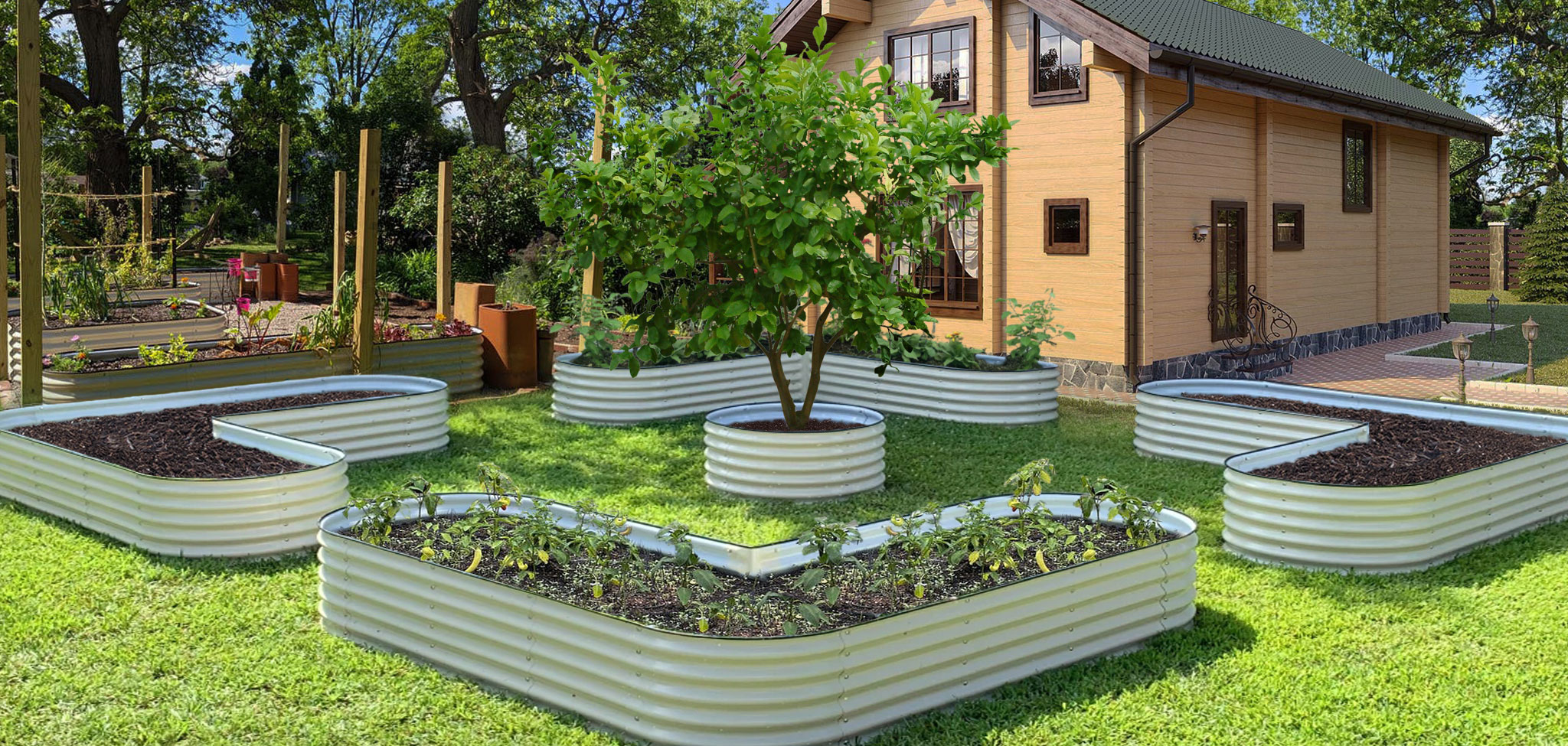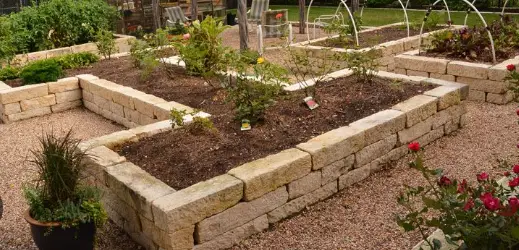Eco Friendly Raised Garden Beds
It is the mission of Yoyo to connect individuals with the products & services they need from eco friendly, sustainable, green organizations. Sustainable Raised garden beds are environmentally friendly and sustainable.


Explore Eco Friendly Raised Garden Beds

Create a Garden Anywhere Using Raised Garden Beds
Are you new to gardening or just looking for a way to make the most of your outdoor space? Raised garden beds might be the perfect solution for you. These simple structures allow you to create a garden anywhere, even in areas with poor soil quality or limited sunlight.
What is a sustainable raised garden bed?
So, what exactly are raised garden beds? They’re exactly what they sound like - beds that are raised above the ground level. They can be made from a variety of materials, like wood, plastic, or metal, and can be any size or shape to fit your needs. The most common type is a rectangular box with four sides, but you can also find circular, hexagonal, and other shapes.
How does a raised garden bed help the environment?
Raised garden beds are not only a great way to grow your own fresh produce and add some greenery to your outdoor space, but they can also be good for the environment. Here are a few ways raised garden beds can have a positive impact:
- Water conservation: Because raised garden beds are built above the ground, they allow for better drainage and water retention. This means you can use less water overall, and you’ll be less likely to overwater your plants.
- Pesticide reduction: When you grow your own produce, you have more control over what goes into your soil and what you apply to your plants. By choosing organic methods and avoiding pesticides, you can reduce the amount of chemicals that enter the environment from pest control sprays.
- Carbon sequestration: Plants absorb carbon dioxide from the air as they grow, and by growing a variety of plants in your raised garden bed, you can help sequester carbon in the soil.
- Habitat creation: Raised garden beds can provide a habitat for birds, bees, butterflies, and other pollinators, helping to support biodiversity in your area.
Overall, raised garden beds are a great way to create a sustainable and environmentally-friendly garden.
Spring Hot Sale! Make your garden neater and nicer with Vegega metal garden beds .
Does your garden have poor soil or drainage issues?
One of the best things about raised garden beds is that they let you create a garden in areas with poor soil or drainage. By building up the soil level and adding your own soil mix, you can create the perfect growing conditions for your plants. And if you have limited space or mobility, raised garden beds are great because you can put them on a patio, balcony, or other small area.
Choosing the right materials for a raised garden bed
When it comes to choosing materials for your raised garden bed, think about the size and shape of the bed, the look and feel you want, and the cost and availability of the materials in your area. Wood is a classic choice that can be painted or stained, but it will require more maintenance. Plastic and metal are more low-maintenance options, but they may not have the same natural look as wood.
What do I put on the bottom of a raised garden bed?
There are a few options for what you can put on the bottom of a raised garden bed. One option is to use a weed barrier fabric. This will help prevent weeds from growing up through the bottom of the bed and interfering with your plants. You can also use a layer of newspaper or cardboard on the bottom of the bed as a weed barrier.
Another option is to use a layer of compost or well-rotted manure on the bottom of the bed. This will help add nutrients to the soil and improve its overall quality. You can also mix in some sand or grit to improve drainage if the soil in your raised bed tends to get waterlogged.
It’s important to remember that the soil in a raised bed will be more heavily used than the soil in a traditional garden, so it’s important to take steps to ensure that it is healthy and well-draining.
How deep should raised garden beds be?
The depth of a raised garden bed depends on the plants you plan to grow and the type of soil in your garden. In general, raised beds should be at least 6 inches deep, but 8-12 inches is ideal for most plants. For plants that have deep root systems, such as tomatoes or carrots, you may want to make the bed even deeper to allow for sufficient root growth.
It’s also important to consider the type of soil in your garden when determining the depth of your raised bed. If you have heavy clay soil, a deeper bed may be necessary to provide enough rooting space for your plants. On the other hand, if you have light, well-draining soil, a shallower bed may be sufficient.
Ultimately, the depth of your raised bed will depend on your specific gardening needs and goals. It’s a good idea to research the plants you want to grow and their specific soil and depth requirements to ensure that your raised bed is the appropriate depth for your plants.
Is it cheaper to buy or build a raised garden bed?
Wondering whether it’s cheaper to buy or build a raised garden bed? It really depends on a few different factors.
For one, it’ll depend on the materials you use. If you build your own raised garden bed, you can use materials you already have on hand, like recycled wood or pallets. This can save you a lot of money compared to buying a pre-made garden bed. But keep in mind, building your own garden bed does take some time and effort. So if you don’t have much experience with DIY projects or just don’t have the time, it might be easier (and potentially even cheaper) to just buy one.
As for the materials themselves, metal and plastic raised garden beds tend to be more expensive than wood ones. But on the flip side, they’re also usually lower maintenance and might last longer. And of course, the size of your garden bed will also impact the price. Larger beds will naturally cost more than smaller ones.
If you want to get real fancy with your garden raised beds you can use building supplies like: chromated copper asenate, pressure-treated wood, pressure-treated lumber, wood preservative, fly ash, hügelkultur, raised-bed, mulch, tilled, decks, logs, arsenic, timber, permaculture, limestone, drain, perennials, methyl bromide, lumber, hay, and tillage
So, what’s the bottom line? If you have the time and resources to build your own raised garden bed, it can definitely be a cost-effective option. But if you’d rather just buy one, there are plenty of options out there at different price points. Just shop around and compare prices to find the best deal.
What can you grow in your raised garden bed?
Once you have your raised garden bed set up, it’s time to start thinking about what to plant. When choosing plants, consider the amount of sunlight the bed gets, the soil quality, the water needs of the plants, the local climate, the pest resistance of the plants, and the amount of space you have. With these tips in mind, you’ll be well on your way to creating a thriving raised garden bed. Happy gardening!
What are the disadvantages of raised garden beds?
Raised garden beds have a number of advantages, including the ability to control soil quality and drainage, reduced weed growth, and easier accessibility for planting, watering, and harvesting. However, there are also a few potential disadvantages to consider:
- Cost: Raised beds can be expensive to set up, especially if you need to purchase soil or other materials to fill them.
- Space: Raised beds take up more space in your garden than traditional in-ground beds, which may not be practical if you have a small yard or limited gardening space.
- Time and effort: Building and maintaining raised beds can be more time-consuming and labor-intensive than traditional in-ground beds, especially if you have to fill them with soil or compost and/or add additional support structures such as trellises or cages.
- Soil quality: While you have more control over the soil quality in a raised bed, it can be more challenging to maintain optimal soil conditions over time. You may need to add fertilizers or other amendments more frequently to ensure that your plants are getting the nutrients they need.
- Pest and disease control: Pests and diseases can be more difficult to manage in raised beds, especially if the beds are not properly drained or if the soil is not well-aerated.

Limestone Raised Garden Beds Did you know that limestone raised garden beds have become increasingly popular among homeowners in recent years? According to a survey

How To Fill Raised Garden Beds Cheaply
How To Fill Raised Garden Beds Cheaply Have you ever dreamed of having a bountiful garden, but the cost of filling raised garden beds put

Best Depth For Raised Garden Beds
Best Depth For Raised Garden Beds When it comes to creating the perfect raised garden bed, one of the most important factors to consider is
Raised Garden Beds Recycled Plastic
Raised Garden Beds Recycled Plastic Have you ever considered the possibility of using recycled plastic to create a raised garden bed? It’s a great way
Raised Garden Beds Soil Layers
Raised Garden Beds Soil Layers Hey there gardeners! Have you ever wondered what goes into creating the perfect soil for your sustainable raised garden beds?
Raised Garden Beds Watering System
Raised Garden Beds Watering System Gardening can provide us with a sense of purpose, connection to nature and satisfaction from watching our plants grow. But,